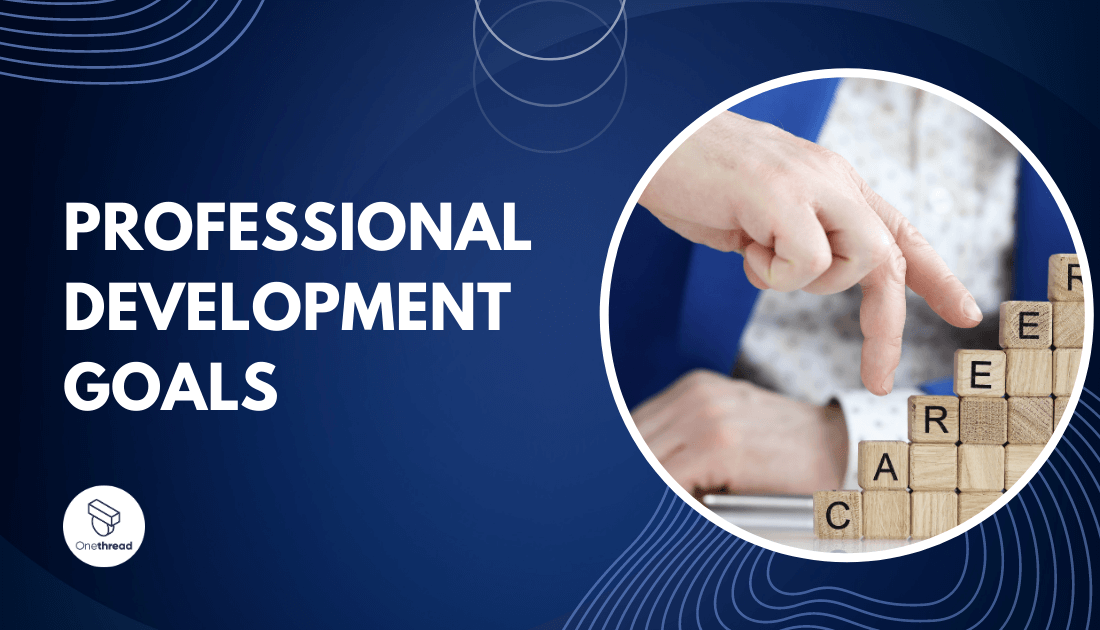Setting and achieving professional development goals is crucial to personal and career growth. In today’s rapidly changing professional landscape, individuals actively engaging in continuous learning and development are likelier to stay competitive and thrive in their careers.
Professional goals provide a roadmap for acquiring new skills, enhancing existing abilities, and achieving success in the workplace.
This comprehensive guide explores the significance of professional expansion goals, the key areas for growth, effective goal-setting strategies, strategies for achieving goals, and the impact of professional development on career growth and success.
By embracing a proactive approach to professional growth, individuals can unlock new opportunities, enhance employability, and achieve their long-term aspirations.

Tired of complex pricing structures for project management tools as your team grows? Opt for Onethread today and enjoy straightforward pricing plans!
Understanding Professional Development
What Is Professional Development and What Is the Purpose of It?
Professional development refers to the process of acquiring and improving skills, knowledge, and competencies related to one’s profession or career. It involves intentional and systematic efforts to expand capabilities, stay up-to-date with industry trends, and adapt to changing demands in the workplace.
Professional development encompasses various activities such as training programs, workshops, seminars, continuing education, and self-directed learning.
Why Continuous Employee Professional Development Is Necessary?
Businesses across industries recognize the significance of investing in the continuous professional development of their employees. Adequate training and development programs can foster a highly skilled and engaged workforce, leading to improved performance and increased productivity.
On the other hand, the lack of investment in professional development can result in disengagement, skill gaps, and reduced efficiency, which may have significant financial implications for organizations.
Impact of Inadequate Training and Disengagement on Businesses
Research suggests that inadequate training and disengagement in the workplace can lead to substantial financial losses. In fact, it has been estimated that businesses suffer an annual loss of approximately $550 billion due to these factors.
Insufficient training can result in employees lacking the necessary skills to perform their roles effectively, leading to decreased productivity and lower-quality work. Additionally, disengaged employees are more likely to experience burnout, have higher turnover rates, and negatively impact team dynamics.
Key Areas for Professional Development
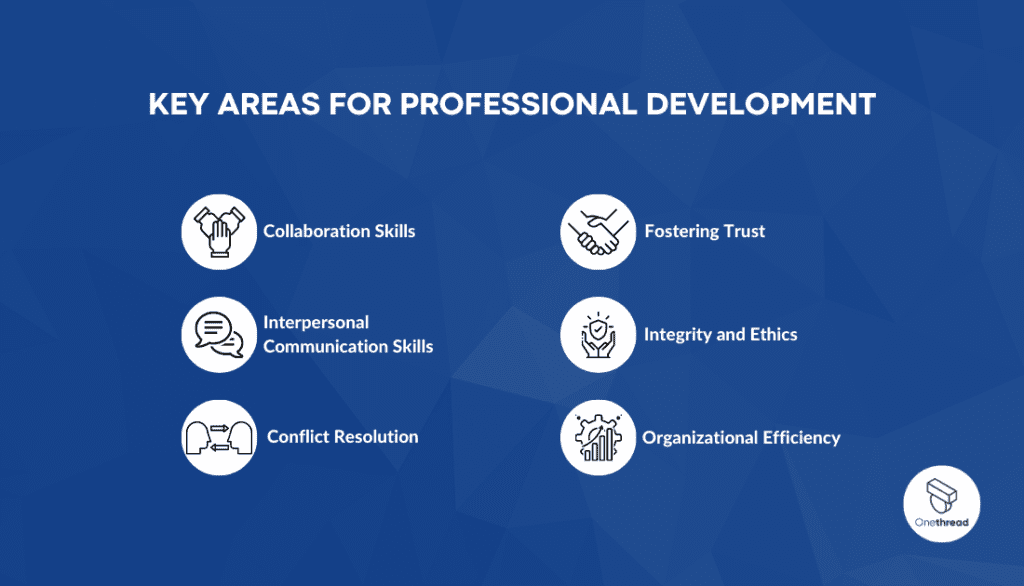



1. Collaboration Skills
Importance of Collaboration in the Workplace
Collaboration is a critical skill that promotes effective teamwork, idea generation, and problem-solving in the workplace.
It involves working together with colleagues, sharing knowledge and resources, and leveraging diverse perspectives to achieve common goals. Effective collaboration enhances productivity, fosters innovation, and improves the overall work environment.
Developing Effective Collaboration Skills
Developing strong collaboration skills requires individuals to cultivate qualities such as active listening, open-mindedness, and respect for other’s ideas. Communicating clearly, contributing constructively to discussions, and building relationships based on trust and mutual respect are essential.
Collaborative individuals can leverage team members’ strengths, resolve conflicts, and work towards shared objectives.
2. Interpersonal Communication Skills
Enhancing Communication for Better Workplace Relationships
Interpersonal communication skills are vital for establishing and maintaining positive relationships with colleagues, clients, and stakeholders. Effective communication enables the smooth flow of information, prevents misunderstandings, and enhances teamwork.
It encompasses both verbal and non-verbal communication, including body language, tone of voice, and written correspondence.
Active Listening and Non-Verbal Communication
Active listening is a fundamental component of effective interpersonal communication. It involves giving full attention to the speaker, seeking clarification when needed, and demonstrating empathy. Additionally, non-verbal communication cues, such as facial expressions, gestures, and posture, play a significant role in conveying messages and understanding others’ emotions.
3. Conflict Resolution
Recognizing and Addressing Conflict in the Workplace
Conflict is a natural part of any workplace, stemming from differences in opinions, values, or interests. Developing the ability to recognize and address conflicts in a constructive manner is essential for maintaining a harmonious work environment.
Effective conflict resolution minimizes the negative impact of disputes and promotes collaboration and cooperation among team members.
Strategies for Effective Conflict Resolution
Resolving conflicts requires active listening, empathy, and the ability to find mutually agreeable solutions. Techniques such as mediation, negotiation, and compromise can be employed to address conflicts and find common ground. ]
It is crucial to maintain open lines of communication, encourage dialogue, and foster an atmosphere of respect and understanding.
4. Fostering Trust
Building Trust within Teams and Organizations
Trust is the foundation of successful teamwork and collaboration. When trust is present, team members feel comfortable sharing ideas, taking risks, and working towards common goals.
Trust-building is a continuous process that establishes credibility, demonstrates integrity, and fosters a supportive and inclusive work environment.
Trust-Building Techniques and Strategies
Building trust requires consistent actions and behaviors that promote transparency, reliability, and accountability. Managers and leaders can foster trust by promoting open communication, providing constructive feedback, and recognizing individual and team achievements. Additionally, encouraging collaboration, delegating responsibilities, and involving team members in decision-making processes can contribute to a culture of trust.
5. Integrity and Ethics
Upholding Professional Ethics and Integrity
Integrity and ethics are essential aspects of professional conduct. Upholding ethical standards ensures fairness, honesty, and responsibility in the workplace.
Professionals with high levels of integrity are trusted by their colleagues, clients, and stakeholders, which contributes to a positive reputation and long-term success.
Ethical Decision-Making and Behavior in the Workplace
Ethical decision-making involves considering the potential consequences of actions and choosing courses of action that align with professional standards and organizational values. It requires individuals to demonstrate ethical behavior, adhere to legal and regulatory requirements, and prioritize the best interests of stakeholders.
Organizations can promote ethical conduct by establishing a code of ethics, providing ethical training, and creating a supportive ethical culture.
6. Organizational Efficiency
Importance of Efficient Work Processes
Organizational efficiency refers to the ability of an organization to achieve its goals effectively and utilize resources optimally. Efficient work processes enhance productivity, minimize waste, and improve overall organizational performance.
Organizations can achieve greater efficiency by streamlining processes and eliminating unnecessary steps or bottlenecks.
Strategies for Enhancing Organizational Efficiency
Improving organizational efficiency requires a systematic approach to identify areas for improvement and implement effective strategies. This can include process mapping, identifying and eliminating non-value-added activities, implementing automation or technology solutions, and fostering a culture of continuous improvement.
Regular evaluation and measurement of key performance indicators (KPIs) can help track progress and identify further opportunities for efficiency gains.
Tips for Setting Effective Professional Development Goals
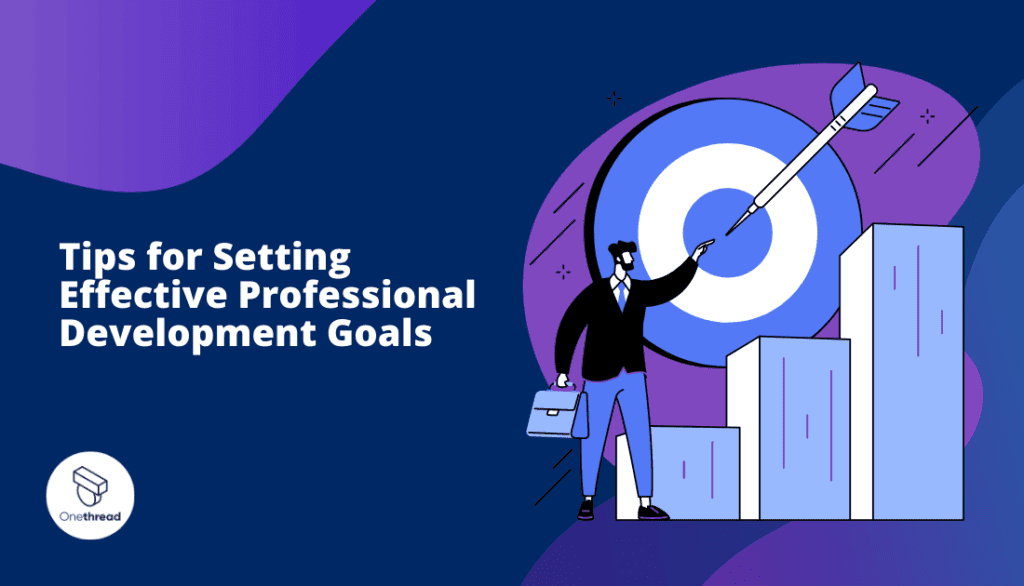



1. The SMART Approach
Specific Goals
Setting specific goals helps provide clarity and focus. Rather than setting vague goals like “improve communication skills,” it is more effective to set specific goals such as “deliver effective presentations during team meetings.”
Measurable Goals
Measurable goals allow for progress tracking and provide a sense of accomplishment. For example, a measurable goal could be “increase customer satisfaction ratings by 10% within six months.”
Attainable Goals
Goals should be challenging yet attainable. When setting goals, it is essential to consider available resources, skills, and time constraints. Setting unattainable goals can lead to frustration and demotivation.
Relevant Goals
Relevant goals are aligned with personal and professional aspirations. They should contribute to career growth and address areas of improvement. Aligning goals with personal values and long-term objectives ensures greater motivation and commitment.
Time-Bound Goals
Time-bound goals have a specific deadline or timeline for completion. This helps create a sense of urgency and prevents procrastination. For example, a time-bound goal could be “complete a project management certification within nine months.”
2. Reflecting on Past Performance
Assessing Strengths and Weaknesses
Reflecting on past performance allows individuals to identify their strengths and weaknesses. Individuals can set relevant and meaningful professional maturation goals by recognizing areas of expertise and areas for improvement.
Identifying Areas for Improvement
Analyzing past performance helps identify specific areas that require improvement. This could include technical skills, soft skills, or knowledge gaps. By addressing these areas, individuals can enhance their overall professional competence.
3. Examples of Professional Development Goals
a. Learning New Skills
Setting goals to learn new skills helps individuals stay relevant in their field. This could include acquiring technical skills, learning new software, or developing expertise in emerging technologies.
b. Improving Communication Skills
Enhancing communication skills is beneficial in any professional role. Setting goals to improve written, verbal, or interpersonal communication abilities can lead to better collaboration, more effective presentations, and stronger relationships with colleagues and clients.
c. Developing Leadership Abilities
Setting goals to develop leadership skills prepares individuals for future leadership roles. This could involve taking on additional responsibilities, improving decision-making skills, or attending leadership training programs.
d. Expanding Professional Network
Building a strong professional network opens up opportunities for career growth and collaboration. Setting goals to expand one’s network through networking events, industry conferences, or online platforms can be highly valuable.
e. Enhancing Credentials and Education
Setting goals to enhance credentials, such as obtaining professional certifications or advanced degrees, can increase credibility and open doors for career advancement.
f. Staying Updated with Industry Trends
Setting goals to stay updated with industry trends and advancements ensures individuals remain competitive and knowledgeable. This could involve attending webinars, subscribing to industry publications, or participating in relevant online communities.
g. Increasing Job Satisfaction
Setting goals to improve job satisfaction focuses on personal well-being and fulfillment in the workplace. This could include pursuing projects aligned with personal interests, seeking opportunities for professional growth, or achieving work-life balance.
h. Shadowing Other Departments
Setting goals to shadow other departments within an organization provides a broader perspective and a better understanding of how different teams collaborate and contribute to the organization’s overall success.
i. Finding a Mentor
Setting goals to find a mentor helps individuals gain guidance, advice, and support from experienced professionals in their field. A mentor can provide valuable insights, help navigate challenges, and accelerate professional growth.
Proven Strategies for Achieving Professional Development Goals
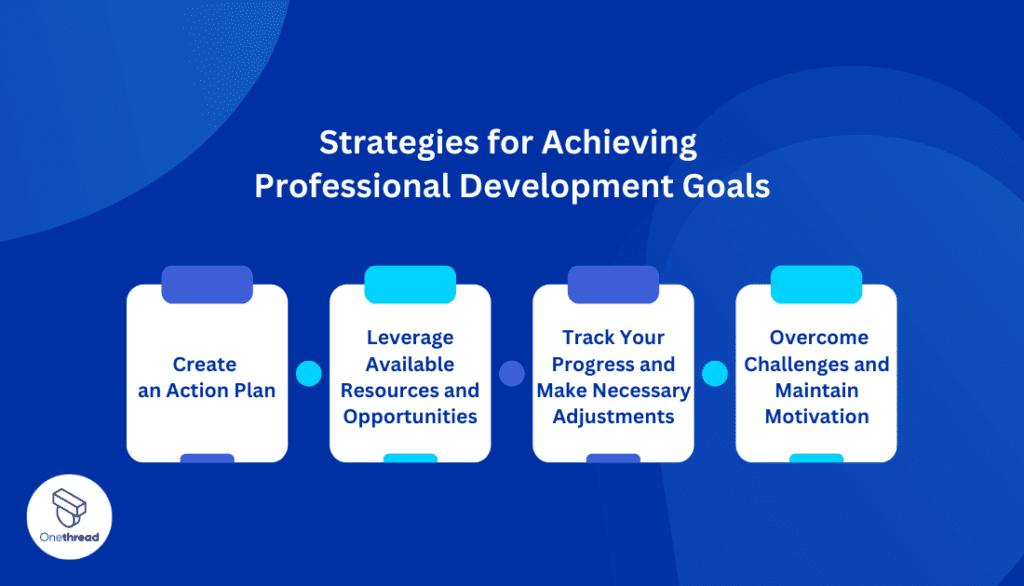



1. Create an Action Plan
Breaking Goals into Actionable Steps
Dividing goals into smaller, achievable tasks enhances manageability and boosts the chances of achieving success. Each step should be clear and specific, outlining what needs to be done to achieve the overall goal.
Prioritizing and Scheduling Tasks
Prioritizing tasks helps individuals allocate time and resources effectively. Individuals can maintain focus and progress toward their professional growth goals by identifying high-priority tasks and allocating dedicated time slots for goal-related activities.
2. Leverage Available Resources and Opportunities
Training Programs and Workshops
Participating in relevant training programs and workshops can provide structured learning opportunities to acquire new skills or deepen existing knowledge. Many organizations offer in-house training programs, while external providers offer a wide range of courses and workshops.
Online Courses and Learning Platforms
Online courses and learning platforms provide flexible and convenient options for professional development. These platforms offer a wide range of courses, often self-paced, that can be accessed from anywhere with an internet connection.
Enhance your skills with a variety of educational resources. For aspiring cloud professionals, DataCamp’s online cloud computing courses offer valuable insights into cloud technologies, complementing your professional growth and preparing you for the evolving tech landscape.
Professional Associations and Networking Events
Engaging with professional associations and attending networking events provides opportunities to connect with industry peers, gain insights, and stay updated with industry trends. These events often offer workshops, panel discussions, and guest speakers.
3. Track Your Progress and Make Necessary Adjustments
Regularly Evaluating Goal Achievement
Regularly evaluating progress toward professional goals helps individuals stay on track and make any necessary adjustments. This can involve self-assessment, seeking feedback from mentors or supervisors, or reviewing performance indicators.
Modifying Goals Based on Feedback and Experience
Feedback and experiences can provide valuable insights into the effectiveness of professional development goals. If certain goals are not aligned with expectations or require adjustment, individuals should be open to modifying their goals to ensure continued growth and progress.
4. Overcome Challenges and Maintain Motivation
Dealing with Obstacles and Setbacks
Challenges and setbacks are part of the professional development journey. It is essential to develop resilience and problem-solving skills to overcome obstacles. Seeking support from mentors, colleagues, or support networks can also provide valuable guidance and encouragement.
Staying Focused and Motivated
Maintaining motivation requires a clear understanding of personal aspirations and the benefits of achieving professional maturation goals. Setting milestones, celebrating achievements, and visualizing the desired outcome can help individuals stay focused and motivated throughout the journey.
The Impact of Professional Development on Career Growth and Success
Enhancing Employability and Marketability
Gaining Competitive Advantage
Continuously investing in professional expansion goals enhances an individual’s employability and marketability. See how the resumes of thriving professionals showcase mastery in key skills and secured certifications related to their niche. Employers value such candidates who are committed to self-improvement and possess diverse skill sets.
Opening Doors for Career Advancement
Professional goals provide opportunities for career advancement by acquiring new skills and demonstrating professional growth. By staying up-to-date with industry trends and maintaining a strong professional network, individuals increase their chances of accessing new career opportunities.
Personal and Professional Growth
Developing a Growth Mindset
Embracing professional growth goals fosters a growth mindset—an attitude that views challenges as opportunities for learning and improvement. A growth mindset allows individuals to adapt to changing circumstances, embrace innovation, and continuously strive for personal and professional growth.
Building Confidence and Self-Efficacy
Achieving professional expansion goals enhances confidence and self-efficacy—the belief in one’s ability to accomplish tasks and achieve success. Individuals’ confidence grows as they reach milestones and acquire new skills, enabling them to take on more significant challenges and responsibilities.
How Onethread Can Help Achieve Professional Development Goals
Onethread proves to be an indispensable tool for achieving professional development goals through its seamless communication capabilities, efficient goal tracking, and real-time monitoring features.
Whether you are looking to advance in your current career, switch fields, or enhance your skill set, Onethread provides a range of resources and features to support your journey. Here’s how Onethread can help you achieve your professional development goals:
1. Seamless Communication
Effective communication lies at the heart of any successful professional development journey.
Onethread enables teams and individuals to communicate seamlessly across various channels, breaking down barriers and fostering collaboration. Through its user-friendly interface, Onethread provides:
a) Real-time Messaging
Onethread’s instant messaging feature allows team members to exchange ideas, discuss progress, and seek feedback promptly. This real-time communication boosts teamwork, eliminates delays, and ensures that everyone stays aligned towards their professional development objectives.
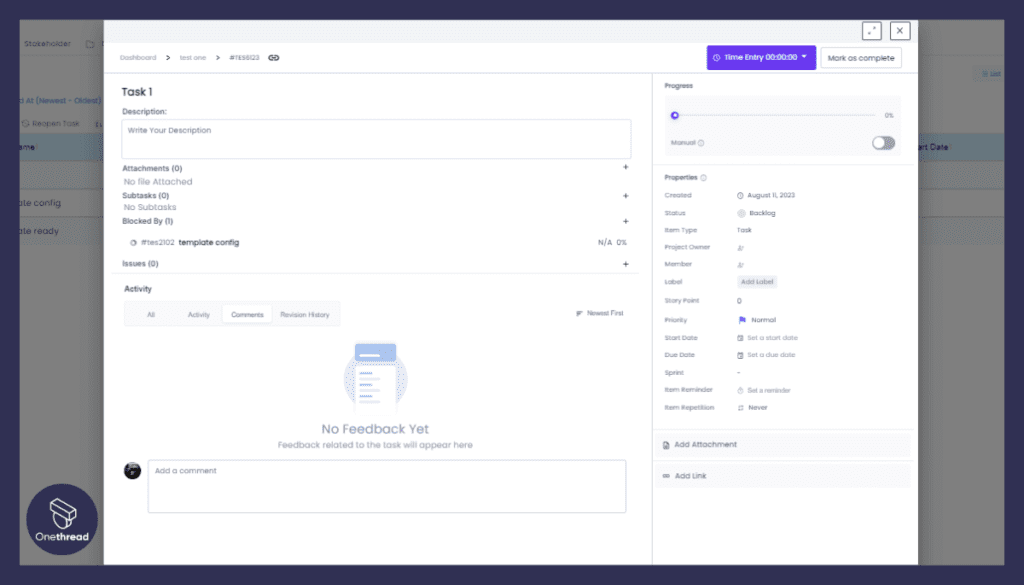



b) Collaborative Spaces
Onethread offers dedicated spaces for discussions, brainstorming sessions, and document sharing. These spaces provide a central hub for team members to share insights, resources, and valuable knowledge, promoting a dynamic learning environment.
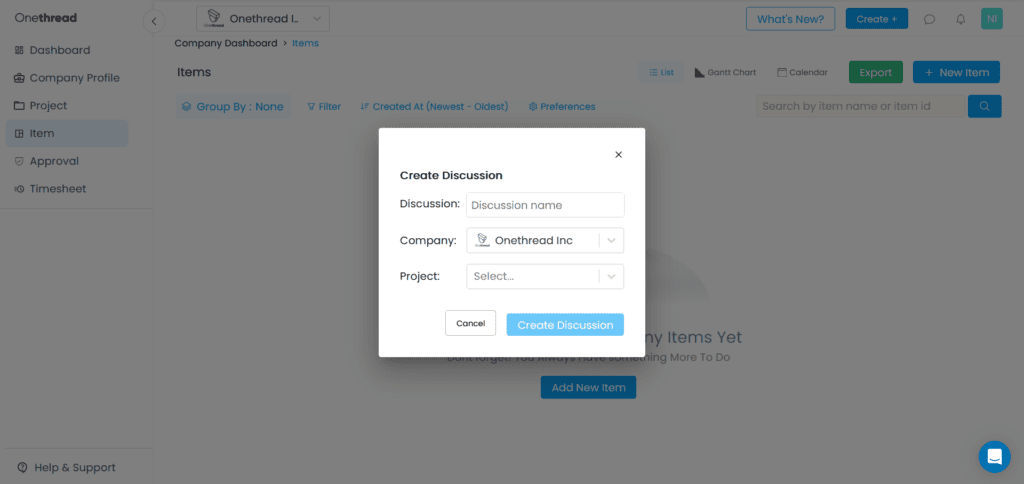



2. Efficient Goal Tracking
Setting and tracking goals are crucial aspects of professional development. Onethread streamlines the process by providing an array of tools and features designed to make goal-tracking efficient and effective:
a) Goal Setting
With Onethread, individuals and teams can set clear and measurable development goals. Users can define milestones, deadlines, and specific tasks required to achieve those goals.
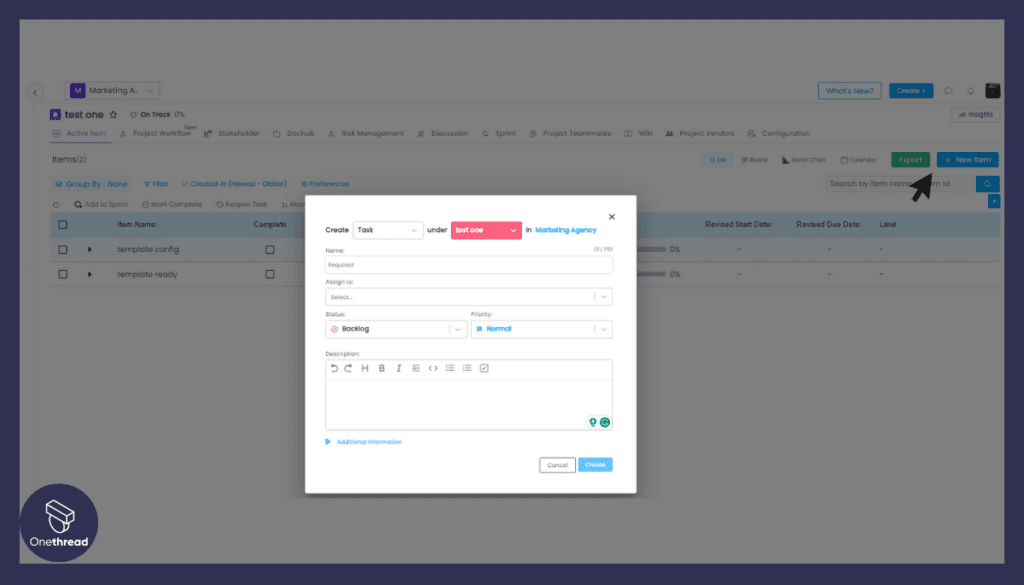



b) Progress Monitoring
Onethread allows users to track their progress in real-time. This visibility enables them to identify potential roadblocks early on, make necessary adjustments, and stay on track toward achieving their goals.




c) Accountability
Onethread fosters accountability within teams by assigning responsibilities to specific individuals and monitoring their contributions towards shared goals. This feature promotes a sense of ownership and motivation, encouraging everyone to participate in the development process actively.
3. Real-time Monitoring
Regular monitoring of progress is vital to stay on top of professional development efforts. Onethread offers robust monitoring features to ensure constant visibility and measurement of performance:
a) Data Analytics
Onethread provides insightful data analytics that offer a comprehensive overview of individual and team performance. Managers and team members can use this data to assess their development journey’s effectiveness and make data-driven decisions.
b) Progress Reports
Onethread generates automated progress reports, summarizing achievements, challenges, and upcoming tasks. These reports facilitate regular check-ins, feedback sessions, and performance evaluations.
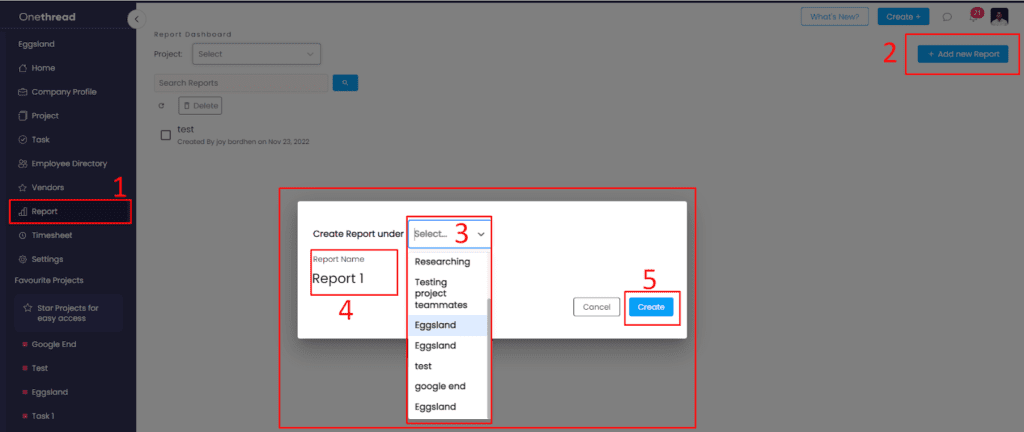



By fostering collaboration, accountability, and progress visibility, Onethread empowers individuals and teams to excel in their development journey.
Adopting this platform can lead to enhanced productivity, skill enhancement, and overall growth, ensuring that professional goals are met with confidence and success.
Conclusion
Professional development goals play a vital role in personal and career growth. They enable individuals to acquire new skills, enhance existing abilities, and stay competitive in the ever-evolving job market.
Individuals can successfully navigate their professional development journey by setting SMART goals, reflecting on past performance, and leveraging goal achievement strategies.
Continuous learning and development are critical in an increasingly dynamic and competitive professional landscape. Embracing a mindset of lifelong learning and consistently pursuing professional maturation goals ensures individuals remain adaptable, agile, and well-prepared for future challenges and opportunities.
Here are some key takeaways from this guide:
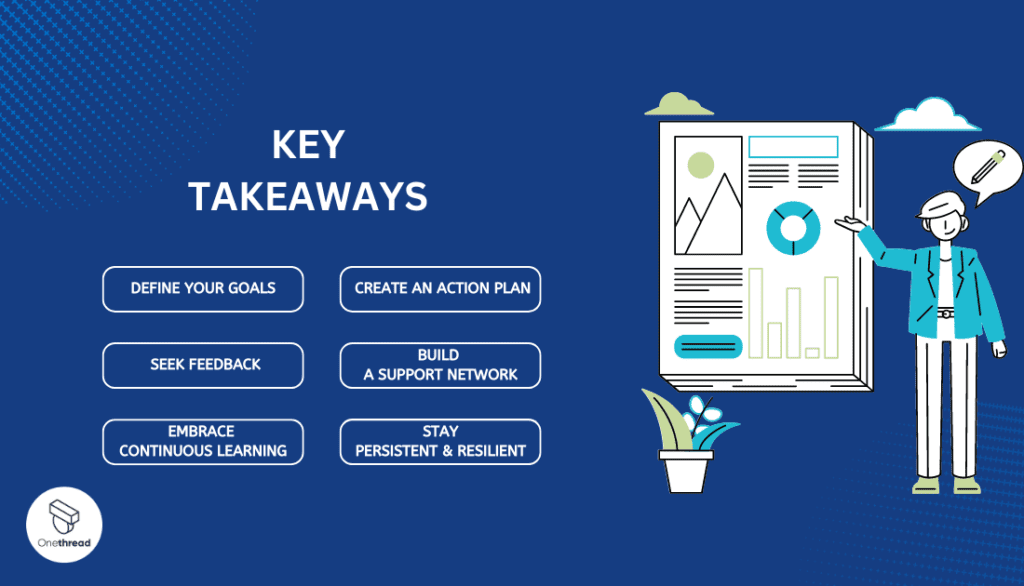



1. Define Your Goals: Take the time to identify what you want to accomplish in your career. Set specific, measurable, attainable, relevant, and time-bound (SMART) goals that align with your interests and strengths.
2. Create an Action Plan: Break down each goal into actionable steps or milestones. This will help you stay organized and motivated throughout the process.
3. Seek Feedback: Actively seek feedback from mentors or colleagues who can provide valuable insights on how to improve professionally.
4. Build a Support Network: Surround yourself with like-minded individuals who share similar ambitions or have already achieved what you aspire to learn from their experiences.
5. Embrace Continuous Learning: Invest in developing new skills through workshops, courses, certifications, or attending industry conferences/webinars relevant to your field.
6. Stay Persistent & Resilient: Professional development takes time and effort; setbacks may occur along the way but remain persistent in pursuing your goals despite the challenges faced.
7. Be Adaptable & Open-Minded: Be open-minded about exploring different paths within your profession; sometimes opportunities arise unexpectedly, which could lead you towards new areas of growth
By following these tips for successful professional development outlined above, you’ll be well-equipped to set meaningful goals, develop strategies that work best for you, and ultimately achieve success in advancing your career.
So go ahead! Take charge of your professional growth and start setting those development goals today. With the right mindset.
FAQs
Let’s delve into some burning questions you may have about professional development goals:
1. What exactly are professional development goals?
Professional development goals are specific objectives that individuals set to enhance their skills, knowledge, and overall performance in the workplace. These goals can range from acquiring new certifications or improving technical abilities to developing soft skills such as leadership or communication.
2. Why should I bother setting professional development goals?
Setting clear and meaningful professional development goals helps you stay focused and motivated on your career journey. They provide a roadmap for growth, allowing you to track your progress while constantly challenging yourself to reach new milestones.
3. How do I identify the right professional development goal for me?
Start by analyzing your current strengths, weaknesses, and long-term career aspirations. Consider areas where improvement could significantly impact your job satisfaction and advancement opportunities. Additionally, seek feedback from mentors or supervisors who can offer valuable insights based on their observations.
4. Should my professional development goals be SMART?
Yes! The SMART framework ensures that your goals are Specific, Measurable, Achievable, Relevant, and Time-bound – making them more actionable and attainable.
5. Who is responsible for achieving my professional development goals?
While employers may provide resources or support for training opportunities, it is ultimately up to you to take ownership of your growth journey. Actively seek out learning experiences both within and outside of work that align with your identified developmental needs.
